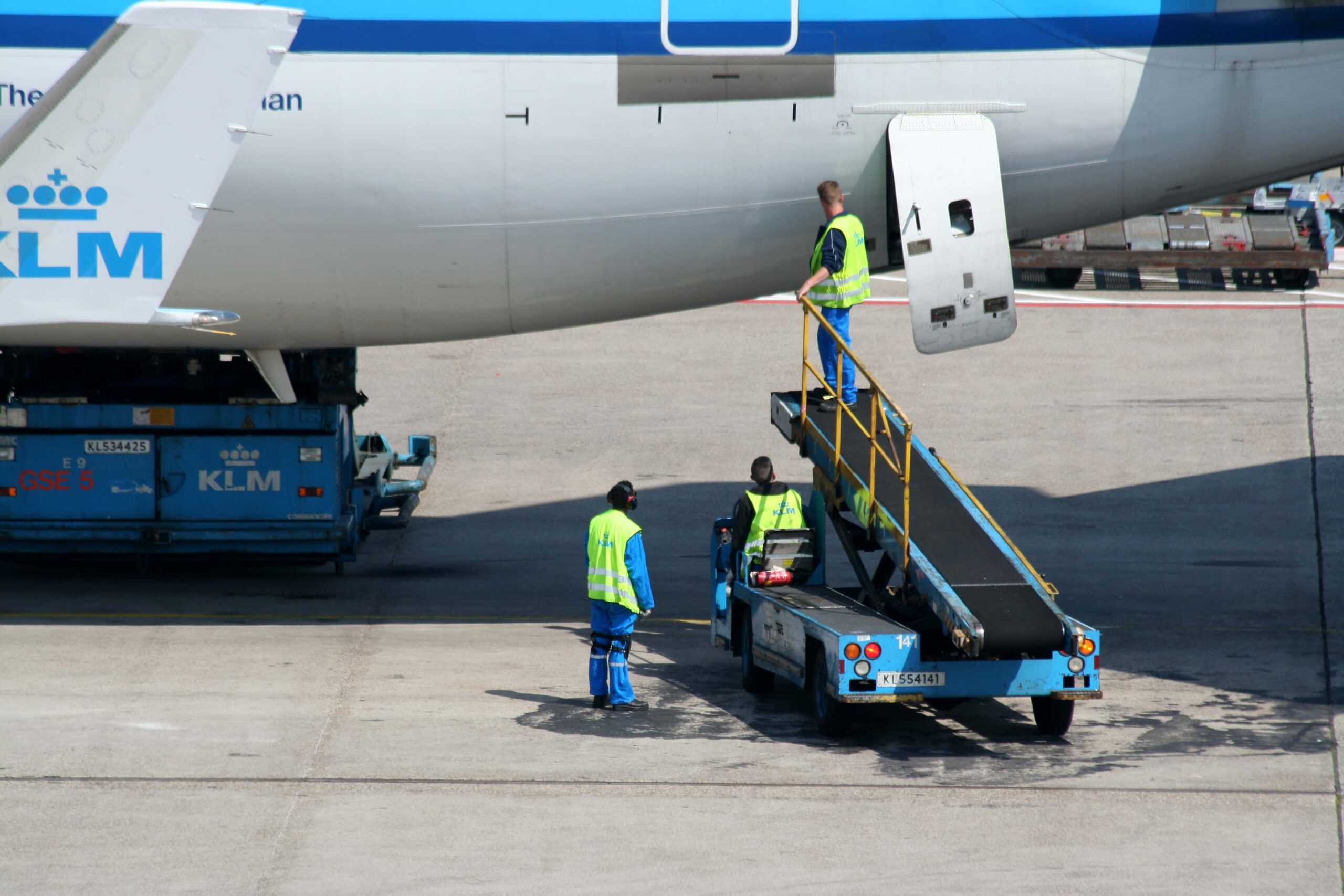Effective scheduling is the backbone of successful pizzerias in Providence, Rhode Island. In a city known for its vibrant food scene and competitive restaurant market, pizzeria owners face unique challenges when it comes to managing their workforce efficiently. From handling the dinner rush on Federal Hill to accommodating the influx of college students from Brown University and Providence College, managing staff schedules requires precision, flexibility, and foresight. Modern scheduling services offer small pizzeria businesses the tools they need to optimize operations, reduce costs, and improve both employee satisfaction and customer experience.
The pizza business in Providence operates on thin margins, making efficient labor management critical to profitability. Whether you’re running a family-owned establishment in Fox Point or a trendy pizza joint near the Providence Place Mall, how you schedule your staff directly impacts your bottom line. With the rise of digital solutions like employee scheduling software, pizzeria owners now have access to powerful tools that can transform their operations, ensuring they have the right staff at the right times while complying with Rhode Island’s labor regulations.
Understanding the Unique Scheduling Challenges for Providence Pizzerias
Providence pizzerias operate in a dynamic environment with scheduling demands that differ from other restaurants and regions. Understanding these unique challenges is the first step toward implementing effective scheduling solutions. The city’s seasonal tourism patterns, college student population, and local events create fluctuating demand that requires adaptive scheduling approaches.
- Seasonal Fluctuations: Providence experiences significant seasonal variation, with summer tourism and winter slowdowns affecting staffing needs dramatically.
- College Calendar Impact: The academic schedules of Brown, RISD, Providence College, and Johnson & Wales University create predictable cycles of high and low demand that must be factored into staffing plans.
- Event-Driven Demand: Local events like WaterFire, conventions at the Rhode Island Convention Center, and performances at PPAC create sudden spikes in customer traffic that require proactive scheduling.
- Weather Sensitivity: New England weather patterns affect both delivery volume and dine-in traffic, necessitating flexible scheduling solutions.
- Staff Availability Constraints: Many pizzeria employees are students or have second jobs, creating complex availability patterns that traditional scheduling methods struggle to accommodate.
The combination of these factors creates scheduling complexities that can overwhelm traditional pen-and-paper or spreadsheet approaches. Modern scheduling services provide the technological framework to address these challenges through data-driven forecasting and automated scheduling tools that adapt to Providence’s unique business rhythm.
Benefits of Implementing Scheduling Services for Small Pizzerias
Adopting specialized scheduling services offers numerous advantages for Providence pizzeria owners. Beyond simply creating work schedules, these tools provide comprehensive solutions that address multiple operational challenges. The return on investment becomes evident quickly as labor efficiency improves and administrative burdens decrease.
- Labor Cost Optimization: Scheduling services help match staffing levels precisely to anticipated demand, reducing overstaffing during slow periods while ensuring adequate coverage during rushes.
- Time Savings for Management: Owners and managers can reclaim hours previously spent creating and adjusting schedules, allowing them to focus on customer experience and business development.
- Reduced Scheduling Conflicts: Automated systems prevent double-booking staff and respect availability constraints, minimizing last-minute call-outs and no-shows.
- Improved Employee Satisfaction: When employees gain more control over their schedules through shift marketplace features, their work-life balance and job satisfaction improve.
- Enhanced Compliance: Scheduling software helps pizzeria owners comply with Rhode Island labor laws regarding breaks, overtime, and predictive scheduling requirements.
- Data-Driven Decision Making: Access to historical scheduling data and performance metrics allows for continuous optimization of staffing strategies.
Research indicates that restaurants implementing modern scheduling systems typically reduce labor costs by 3-5% while simultaneously improving service quality. For a Providence pizzeria with annual labor costs of $250,000, this represents potential savings of $7,500-$12,500 per year. Beyond financial benefits, the improved team communication and scheduling transparency foster a more positive workplace culture.
Essential Features to Look for in Pizzeria Scheduling Services
When evaluating scheduling services for your Providence pizzeria, certain features are particularly valuable for addressing the specific needs of the restaurant industry. Not all scheduling solutions are created equal, and pizzeria owners should prioritize platforms designed with food service operations in mind. The right combination of features can transform scheduling from a necessary chore into a strategic advantage.
- Demand Forecasting: Look for systems that analyze historical sales data to predict busy periods, allowing you to schedule staff based on anticipated demand rather than guesswork.
- Mobile Accessibility: In the fast-paced environment of a pizzeria, mobile access to schedules is essential for both managers and staff, enabling real-time updates and communication.
- Shift Swapping Capabilities: Platforms that allow employees to trade shifts with manager approval help resolve coverage issues without requiring management intervention.
- Time and Attendance Integration: Systems that combine scheduling with time tracking tools provide a complete picture of labor costs and help prevent time theft.
- Multiple Role Management: The ability to schedule employees across different roles (server, cook, delivery driver) is crucial for pizzerias where staff often perform multiple functions.
Integration capabilities are also critical when selecting scheduling software. The ability to connect with your point-of-sale system, payroll software, and other business tools creates a cohesive operational ecosystem. For example, integration capabilities that link sales data with scheduling allow for precise labor forecasting based on actual business patterns unique to your Providence location.
Implementation Strategies for Scheduling Systems in Small Pizzerias
Successful implementation of scheduling services requires careful planning and execution. For small pizzerias in Providence, taking a phased approach often yields the best results. Thoughtful implementation not only ensures technical success but also secures buy-in from your team members, making adoption smoother and more effective.
- Start With Assessment: Analyze your current scheduling processes, identifying pain points and inefficiencies that need to be addressed.
- Select the Right Solution: Choose a scheduling service that aligns with your pizzeria’s specific needs, size, and budget.
- Plan Data Migration: Organize employee information, availability constraints, and historical scheduling data for transfer to the new system.
- Train Staff Thoroughly: Invest time in proper training programs and workshops for both management and employees to ensure everyone can navigate the new system.
- Implement in Phases: Consider rolling out features gradually, starting with basic scheduling before adding more complex functionality like shift swapping or integration with other systems.
Communication is key during implementation. Clearly explain to your team how the new scheduling service will benefit them personally, not just the business. Highlighting features like easier shift swapping, clearer communication, and greater schedule visibility helps secure employee buy-in. Remember that adapting to change can be challenging, so providing consistent support during the transition period is essential.
Staff Management Considerations for Providence Pizzerias
The workforce composition of Providence pizzerias presents unique staff management challenges. From college students with variable class schedules to career food service professionals, pizzeria managers must balance diverse needs while maintaining operational efficiency. Modern scheduling services provide tools to manage this complexity while improving employee satisfaction and retention.
- Student Schedule Accommodation: Features that allow for easy input and updating of class schedules help retain valuable student employees from Providence’s numerous colleges.
- Skill-Based Scheduling: Ensure that each shift has the right mix of experienced and newer staff by using competency-based scheduling features.
- Preference-Based Assignments: Systems that account for employee preferences while meeting business needs create a more satisfied workforce.
- Communication Tools: Integrated messaging features facilitate clear communication about schedule changes, policy updates, or shift coverage needs.
- Performance Integration: Advanced systems can incorporate performance metrics into scheduling decisions, ensuring your best employees are scheduled during peak periods.
Employee empowerment is a significant benefit of modern scheduling systems. When staff have limited control over their work schedules, turnover rates typically increase. Conversely, pizzerias that implement flexible scheduling options often see improved retention rates. In the competitive Providence restaurant market, reducing turnover provides a substantial competitive advantage by preserving institutional knowledge and reducing training costs.
Compliance with Rhode Island Labor Laws for Scheduling
Staying compliant with labor regulations is a critical concern for Providence pizzeria owners. Rhode Island has specific labor laws that impact scheduling practices, and non-compliance can result in costly penalties. Scheduling services help navigate these legal requirements by incorporating compliance features into their functionality.
- Break Management: Rhode Island law requires meal breaks for shifts exceeding six hours, and scheduling software can automatically incorporate these breaks into schedules.
- Minor Work Restrictions: For pizzerias employing high school students, systems can enforce minor labor law compliance regarding hours and times of day when minors can work.
- Overtime Tracking: Automated tracking helps prevent unintentional overtime, which must be paid at 1.5 times the regular rate in Rhode Island.
- Record Keeping: Digital scheduling systems maintain comprehensive records required for compliance with state labor regulations.
- Fair Scheduling Practices: While Providence doesn’t currently have predictive scheduling laws, using software that supports advance schedule notice is a best practice that prepares you for potential future regulations.
Beyond simply avoiding penalties, proper scheduling compliance creates a more stable and fair work environment. Scheduling software with built-in labor compliance features provides peace of mind by reducing the risk of inadvertent violations. This is particularly important for small pizzeria operations that may not have dedicated HR departments to monitor changing regulations.
Technology Integration for Scheduling in Pizzerias
For maximum efficiency, scheduling services should integrate seamlessly with other technology systems used in your pizzeria. When scheduling software communicates with your POS system, payroll software, and other operational tools, you create a comprehensive management ecosystem that reduces administrative work and improves accuracy.
- POS Integration: Connecting scheduling with your point-of-sale system allows labor costs to be analyzed against sales data, enabling precise staffing based on sales volume.
- Payroll Software Connection: Direct payroll software integration eliminates manual data entry, reducing errors and saving administrative time.
- Time Clock Systems: Integration with time clock software ensures accurate tracking of actual hours worked versus scheduled hours.
- Inventory Management: Some advanced systems can correlate staffing with inventory needs, ensuring appropriate prep staff during high-volume periods.
- Customer Ordering Platforms: For pizzerias with delivery and takeout operations, integration with online ordering systems helps predict staffing needs based on incoming orders.
Cloud-based scheduling solutions offer particular advantages for pizzeria operations. Cloud storage services provide secure access from anywhere, allowing managers to make schedule adjustments remotely and enabling staff to check schedules from their mobile devices. This flexibility is invaluable in the dynamic restaurant environment, where quick adjustments are often necessary.
Cost Considerations and ROI for Scheduling Services
When evaluating scheduling services for your Providence pizzeria, understanding the full cost picture and potential return on investment is essential. While there is an upfront investment, the long-term benefits typically outweigh the costs substantially. Breaking down both the direct and indirect financial impacts helps make an informed decision.
- Subscription Costs: Most scheduling services operate on monthly subscription models, with pricing typically based on the number of employees and required features.
- Implementation Expenses: Consider any one-time costs for setup, data migration, integration with existing systems, and initial training.
- Hardware Requirements: Determine if additional hardware (tablets, time clock stations, etc.) will be needed to maximize the system’s effectiveness.
- Labor Savings: Calculate potential savings from reduced overstaffing, minimized overtime, and decreased time spent on schedule creation and management.
- Turnover Reduction: Factor in savings from improved retention rates, including reduced hiring and training costs.
For a typical Providence pizzeria, the ROI timeline for implementing scheduling software is often surprisingly short. While cost management is always a concern for small businesses, many operations report recouping their investment within 3-6 months through labor cost optimization alone. The key is selecting a solution that matches your operation’s size and needs, avoiding paying for unnecessary features while ensuring the system can scale as your business grows.
Best Practices for Schedule Optimization in Pizzerias
Implementing scheduling software is just the beginning; maximizing its effectiveness requires following established best practices. For Providence pizzerias, these optimization strategies can help you get the most value from your scheduling service while creating a more efficient and harmonious workplace.
- Create Consistent Scheduling Patterns: While flexibility is important, establishing some consistency in schedules helps employees plan their lives and reduces confusion.
- Utilize Historical Data: Analyze past sales and labor data to identify patterns and optimize future schedules using reporting and analytics features.
- Publish Schedules in Advance: Aim to release schedules at least two weeks ahead, giving staff adequate time to plan and reducing last-minute callouts.
- Implement Tiered Staffing: Create core schedules for regular business with contingency plans for adding staff during unexpectedly busy periods or special events.
- Cross-Train Employees: Develop a cross-training for scheduling flexibility program to increase scheduling options and coverage capabilities.
Regular review and refinement of your scheduling strategy is essential. Set aside time monthly to analyze scheduling effectiveness, identify trends, and make necessary adjustments. Collecting feedback from both customers and employees about service levels and scheduling satisfaction provides valuable insights that can inform continuous improvement. Remember that scheduling is not a set-it-and-forget-it process but rather an ongoing optimization effort.
Leveraging Scheduling Services for Growth and Expansion
For Providence pizzeria owners with ambitions beyond a single location, sophisticated scheduling services become even more valuable. The scalability of modern scheduling platforms supports business growth, whether you’re adding delivery options, extending hours, or opening additional locations throughout Rhode Island.
- Multi-Location Management: Advanced scheduling services allow centralized control while accommodating location-specific needs and regulations.
- Staff Sharing: Systems with shift marketplace capabilities facilitate sharing staff across locations, maximizing your workforce flexibility.
- Standardized Processes: Implementing consistent scheduling practices across all locations ensures operational uniformity and simplifies management.
- Comparative Analytics: Multi-location reporting allows performance comparison between sites, helping identify best practices and improvement opportunities.
- Scalable Architecture: Cloud-based systems grow with your business without requiring significant additional investment.
The data collected through scheduling services also provides valuable business intelligence that can inform expansion decisions. Workforce planning becomes more strategic when based on comprehensive labor data, helping you determine optimal staffing models for new locations or service offerings. This data-driven approach reduces the risk associated with expansion by allowing more accurate financial projections.
Future Trends in Pizzeria Scheduling Technology
The landscape of scheduling technology continues to evolve, with new innovations offering even greater benefits for Providence pizzeria operators. Staying informed about emerging trends helps you make forward-looking decisions about scheduling technology investments.
- AI-Powered Forecasting: Advanced artificial intelligence and machine learning algorithms are improving demand prediction accuracy, leading to even more precise staffing recommendations.
- Integrated Wellness Features: Emerging systems are incorporating features that monitor work-life balance and prevent burnout through smart scheduling.
- Gig Economy Integration: Platforms that connect with freelance worker marketplaces help fill last-minute staffing gaps without maintaining larger permanent workforces.
- Voice-Activated Updates: Voice technology integration is allowing hands-free schedule checking and updating, particularly valuable in kitchen environments.
- Predictive Compliance: Systems are becoming more proactive about alerting managers to potential compliance issues before schedules are published.
The adoption of these advanced features is accelerating within the restaurant industry. By implementing a robust scheduling service now, Providence pizzeria owners position themselves to easily incorporate these innovations as they become mainstream. Forward-thinking establishments that embrace trends in scheduling software gain competitive advantages through operational efficiency and improved employee experiences.
Conclusion
Effective scheduling is no longer just an administrative function for Providence pizzerias—it’s a strategic advantage that directly impacts profitability, employee satisfaction, and customer experience. By implementing modern scheduling services tailored to the unique needs of small pizzeria operations, owners can transform this traditionally challenging aspect of restaurant management into a strength. The combination of labor cost optimization, time savings, improved compliance, and enhanced employee satisfaction creates compelling value that extends well beyond simple schedule creation.
As you consider upgrading your scheduling processes, begin by assessing your current pain points and identifying the specific features that would address them. Research solutions designed for restaurant operations, focusing on those with proven success in similar-sized establishments. Remember that implementation is as important as selection—take time to properly train your team and establish clear processes. With the right approach and solution, scheduling services can become a cornerstone of operational excellence for your Providence pizzeria, supporting both current operations and future growth.
FAQ
1. How can scheduling software reduce labor costs for Providence pizzerias?
Scheduling software reduces labor costs by preventing overstaffing during slow periods while ensuring adequate coverage during rush times. Using historical data and sales forecasting, these systems match staffing levels to anticipated demand with precision. They also help minimize overtime by alerting managers to potential overtime situations before they occur. For delivery-heavy pizzerias in Providence, scheduling tools can coordinate drivers more efficiently based on order volume and delivery zones, further optimizing labor allocation.
2. What Rhode Island labor laws specifically affect pizzeria scheduling?
Rhode Island requires employers to provide meal breaks of 20 minutes for shifts of 6 hours or more, and 30 minutes for shifts of 8 hours or more. The state also has strict regulations regarding minors’ work hours, particularly during school periods. While Rhode Island doesn’t currently have predictive scheduling laws, employers must maintain accurate time records for all employees. Additionally, overtime must be paid at 1.5 times the regular rate for hours worked beyond 40 in a workweek. Scheduling software can help track and enforce these requirements automatically.
3. How do mobile scheduling apps benefit pizzeria employees?
Mobile scheduling apps provide pizzeria employees with real-time access to their schedules, shift change notifications, and the ability to request time off or swap shifts from anywhere. This visibility and control significantly improves work-life balance, particularly for student employees balancing classes and work. Communication features within these apps also streamline team interactions, reducing confusion and improving coordination. For delivery drivers constantly on the move, mobile access ensures they stay connected with schedule updates even while away from the restaurant.
4. What is the implementation timeline for scheduling software in a small pizzeria?
For a typical small pizzeria in Providence, implementation of scheduling software can be completed within 2-4 weeks. This timeline includes initial setup, data migration, system configuration, and basic training. The first week usually involves system setup and employee data entry. The second week focuses on configuration and initial training for managers. By weeks three and four, the system can be running in parallel with existing methods before fully transitioning. The exact timeline varies based on the complexity of your operation and the chosen solution, but most providers offer implementation support to ensure a smooth transition.
5. How can pizzerias handle last-minute staff callouts effectively using scheduling technology?
Modern scheduling platforms offer several tools for handling last-minute callouts. Shift marketplace features allow employees to post shifts they can’t work, enabling qualified colleagues to pick them up with manager approval. Some systems include automated messaging that can instantly notify available staff about open shifts based on their qualifications and availability preferences. For persistent coverage challenges, advanced systems maintain standby lists of employees willing to work additional hours. These tools collectively reduce the management burden of finding last-minute replacements while ensuring service quality isn’t compromised.












